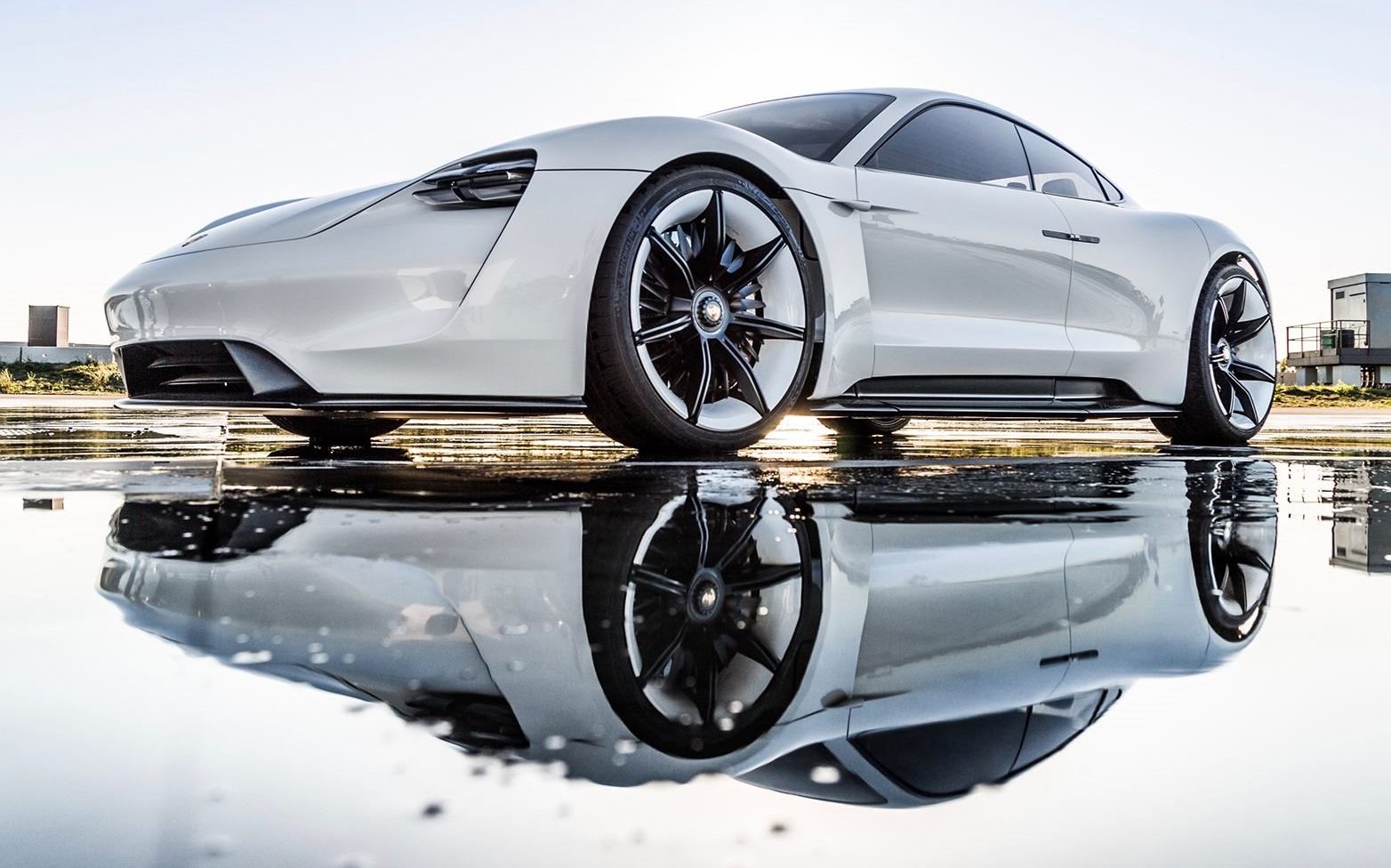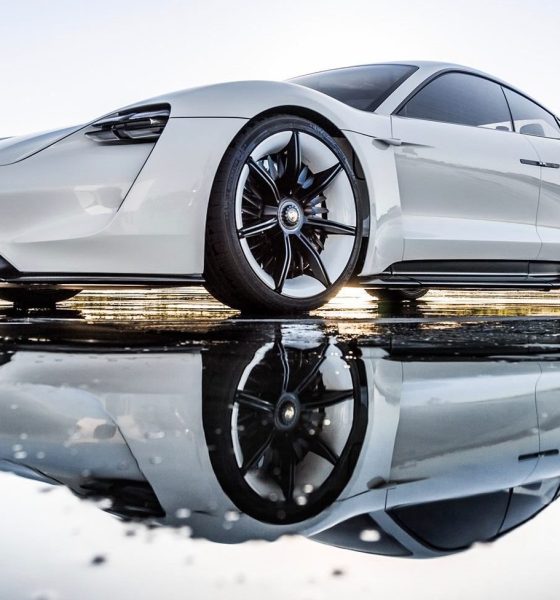

News
Porsche CEO hints at Taycan’s increased initial production, electrified 911
Porsche appears to be set on expediting the electrification of its fleet, with CEO Olliver Blume recently noting that the company would be raising the numbers of the Taycan’s initial production due to strong demand for the vehicle. Apart from this, Blume also hinted at what could very well be the eventual release of an electrified Porsche 911.
Blume’s statements were related to weekly German business news publication WirtschaftsWoche during an interview. The CEO noted that in Norway, where Porsche usually expects to sell around 600 vehicles per year, the company had already accepted almost 3,000 reservations for its first all-electric car. With such a strong, positive reception for the vehicle, Porsche has opted to adjust the Taycan’s initial production run, which was originally set at 20,000 units per year.
“The annual production capacity is 20,000 vehicles. However, due to the positive response, we will adjust this number upwards, especially since the Cross Turismo as the first derivative of the Taycan got (the) green light for the series,” Blume said.
Earlier this year, the company announced that it is abandoning its diesel lineup, even declaring that it expects every second Porsche sold in 2025 to have an electric motor. Blume noted that the company’s electrification initiative would affect even the legacy carmaker’s classic offerings, including the iconic Porsche 911. The CEO remarked that the design of the newly-unveiled 911 is ready for electrification, and thus, a hybrid version of the vehicle would probably be released within the current iteration’s life cycle.
“The new 911 comes to the start as a gasoline engine. But it is already designed so that we can bring in a hybrid drive. Maybe in the course of its life cycle,” he said.
Apart from announcing the updates on the Taycan’s production and the 911’s likely electrification, Blume also expressed his skepticism of hydrogen-powered vehicles, such as those adopted by rivals Toyota and Mercedes-Benz. According to the CEO, battery-powered vehicles simply offer better value and performance over fuel-cell cars.
“The battery is in energy efficiency in operation three times better than hydrogen and six times better than synthetic fuels. If you include the energy-intensive production of batteries, they are still about twice as efficient as other types of drives. This applies both to the use in our two-door sports car as well as sporty sedans and our SUV,” he said.
Porsche is yet to unveil the final production design of the Taycan, though expectations are high that the release version of the electric vehicle would closely resemble the stunning Mission E sedan concept car that debuted at the 2015 Frankfurt Motor Show. Production of the Taycan is expected to begin sometime in 2019 at a facility located at Zuffenhausen, a suburb in Stuttgart, Germany — the same factory where the company manufactures the Porsche 911. The Mission E Cross Turismo, an off-road-capable version of the Taycan, is expected to begin production in 2020.
The Porsche Taycan will not have an engine, but the company notes that the vehicle will have the ever-present “soul” found in all of its cars. Expected to compete with the Tesla Model S, the Taycan is features the legacy carmaker’s trademark performance, with the vehicle being listed with a 0-60 mph time of 3.5 seconds, a range of 310 miles per charge, and a top speed of 155 mph.

News
Tesla starts showing how FSD will change lives in Europe
Local officials tested the system on narrow country roads and were impressed by FSD’s smooth, human-like driving, with some calling the service a game-changer for everyday life in areas that are far from urban centers.

Tesla has launched Europe’s first public shuttle service using Full Self-Driving (Supervised) in the rural Eifelkreis Bitburg-Prüm region of Germany, demonstrating how the technology can restore independence and mobility for people who struggle with limited transport options.
Local officials tested the system on narrow country roads and were impressed by FSD’s smooth, human-like driving, with some calling the service a game-changer for everyday life in areas that are far from urban centers.
Officials see real impact on rural residents
Arzfeld Mayor Johannes Kuhl and District Administrator Andreas Kruppert personally tested the Tesla shuttle service. This allowed them to see just how well FSD navigated winding lanes and rural roads confidently. Kruppert said, “Autonomous driving sounds like science fiction to many, but we simply see here that it works totally well in rural regions too.” Kuhl, for his part, also noted that FSD “feels like a very experienced driver.”
The pilot complements the area’s “Citizen Bus” program, which provides on-demand rides for elderly residents who can no longer drive themselves. Tesla Europe shared a video of a demonstration of the service, highlighting how FSD gives people their freedom back, even in places where public transport is not as prevalent.
What the Ministry for Economic Affairs and Transport says
Rhineland-Palatinate’s Minister Daniela Schmitt supported the project, praising the collaboration that made this “first of its kind in Europe” possible. As per the ministry, the rural rollout for the service shows FSD’s potential beyond major cities, and it delivers tangible benefits like grocery runs, doctor visits, and social connections for isolated residents.
“Reliable and flexible mobility is especially vital in rural areas. With the launch of a shuttle service using self-driving vehicles (FSD supervised) by Tesla in the Eifelkreis Bitburg-Prüm, an innovative pilot project is now getting underway that complements local community bus services. It is the first project of its kind in Europe.
“The result is a real gain for rural mobility: greater accessibility, more flexibility and tangible benefits for everyday life. A strong signal for innovation, cooperation and future-oriented mobility beyond urban centers,” the ministry wrote in a LinkedIn post.
News
Tesla China quietly posts Robotaxi-related job listing
Tesla China is currently seeking a Low Voltage Electrical Engineer to work on circuit board design for the company’s autonomous vehicles.

Tesla has posted a new job listing in Shanghai explicitly tied to its Robotaxi program, fueling speculation that the company is preparing to launch its dedicated autonomous ride-hailing service in China.
As noted in the listing, Tesla China is currently seeking a Low Voltage Electrical Engineer to work on circuit board design for the company’s autonomous vehicles.
Robotaxi-specific role
The listing, which was shared on social media platform X by industry watcher @tslaming, suggested that Tesla China is looking to fill the role urgently. The job listing itself specifically mentions that the person hired for the role will be working on the Low Voltage Hardware team, which would design the circuit boards that would serve as the nervous system of the Robotaxi.
Key tasks for the role, as indicated in the job listing, include collaboration with PCB layout, firmware, mechanical, program management, and validation teams, among other responsibilities. The role is based in Shanghai.
China Robotaxi launch
China represents a massive potential market for robotaxis, with its dense urban centers and supportive policies in select cities. Tesla has limited permission to roll out FSD in the country, though despite this, its vehicles have been hailed as among the best in the market when it comes to autonomous features. So far, at least, it appears that China supports Tesla’s FSD and Robotaxi rollout.
This was hinted at in November, when Tesla brought the Cybercab to the 8th China International Import Expo (CIIE) in Shanghai, marking the first time that the autonomous two-seater was brought to the Asia-Pacific region. The vehicle, despite not having a release date in China, received a significant amount of interest among the event’s attendees.
Elon Musk
Elon Musk and Tesla AI Director share insights after empty driver seat Robotaxi rides
The executives’ unoccupied tests hint at the rapid progress of Tesla’s unsupervised Robotaxi efforts.

Tesla CEO Elon Musk and AI Director Ashok Elluswamy celebrated Christmas Eve by sharing personal experiences with Robotaxi vehicles that had no safety monitor or occupant in the driver’s seat. Musk described the system’s “perfect driving” around Austin, while Elluswamy posted video from the back seat, calling it “an amazing experience.”
The executives’ unoccupied tests hint at the rapid progress of Tesla’s unsupervised Robotaxi efforts.
Elon and Ashok’s firsthand Robotaxi insights
Prior to Musk and the Tesla AI Director’s posts, sightings of unmanned Teslas navigating public roads were widely shared on social media. One such vehicle was spotted in Austin, Texas, which Elon Musk acknowleged by stating that “Testing is underway with no occupants in the car.”
Based on his Christmas Eve post, Musk seemed to have tested an unmanned Tesla himself. “A Tesla with no safety monitor in the car and me sitting in the passenger seat took me all around Austin on Sunday with perfect driving,” Musk wrote in his post.
Elluswamy responded with a 2-minute video showing himself in the rear of an unmanned Tesla. The video featured the vehicle’s empty front seats, as well as its smooth handling through real-world traffic. He captioned his video with the words, “It’s an amazing experience!”
Towards Unsupervised operations
During an xAI Hackathon earlier this month, Elon Musk mentioned that Tesla owed be removing Safety Monitors from its Robotaxis in Austin in just three weeks. “Unsupervised is pretty much solved at this point. So there will be Tesla Robotaxis operating in Austin with no one in them. Not even anyone in the passenger seat in about three weeks,” he said. Musk echoed similar estimates at the 2025 Annual Shareholder Meeting and the Q3 2025 earnings call.
Considering the insights that were posted Musk and Elluswamy, it does appear that Tesla is working hard towards operating its Robotaxis with no safety monitors. This is quite impressive considering that the service was launched just earlier this year.








